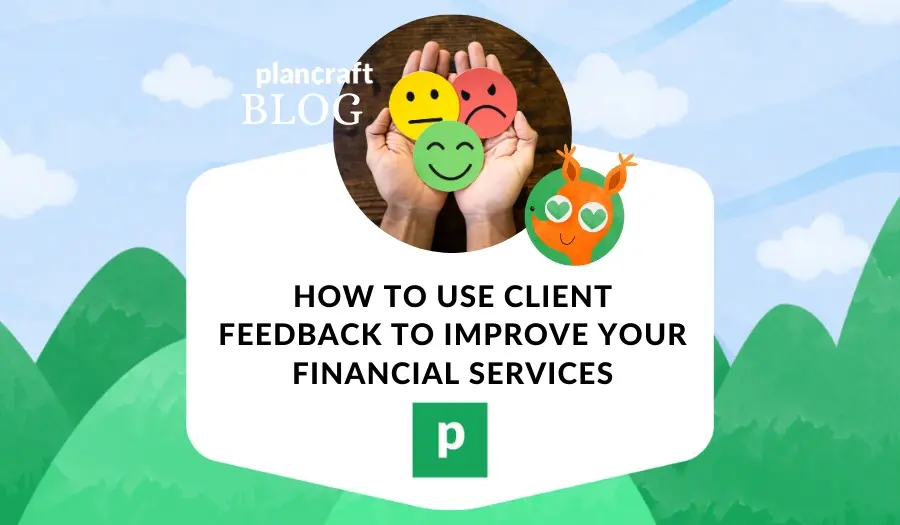Collecting and using client feedback is one of the most powerful ways to enhance your financial services. Not only does it provide direct insight into what clients value, but it also helps you understand their needs and preferences better. This guide will walk you through why client feedback is essential, how to gather it effectively, and actionable steps to turn feedback into improvements.
Why Client Feedback Matters
Client feedback is a goldmine for any financial advisor. It helps you:
- Identify Strengths and Weaknesses: Feedback highlights what you’re doing well and where you can improve, allowing you to sharpen your services.
- Build Trust and Retention: By actively seeking feedback, clients feel valued and heard, leading to stronger relationships and increased client retention.
- Stay Competitive: Understanding client preferences keeps you ahead in a competitive market, ensuring your services remain relevant and valuable.
Step 1: Collecting Client Feedback
There are several ways to gather meaningful feedback from clients:
1. Surveys
Surveys are a structured way to collect feedback and can be sent periodically or after specific interactions. Keep them short, focused, and include both multiple-choice and open-ended questions to capture a range of responses.
- Example: Use questions like “How satisfied are you with our recent meeting?” or “What could we improve about our services?”
2. One-on-One Conversations
For a more personalized approach, ask for feedback during one-on-one meetings. This method allows clients to express their thoughts in detail and gives you an opportunity to ask follow-up questions.
- Tip: Prepare a few open-ended questions to guide the conversation, such as “Is there anything we could do to serve you better?” or “What’s one thing you’d like to see from us in the future?”
3. Feedback Forms
Feedback forms are another simple way to gather information and can be distributed through email or available on your website. Consider placing a feedback form at the end of your client emails or newsletters to make it easy for clients to share their thoughts whenever they like.
4. Follow-Up Calls
If a client recently made a significant financial decision or completed a service milestone with you, a follow-up call can show that you’re genuinely interested in their satisfaction. These calls allow you to gain specific insights on what went well and where you can improve.
Step 2: Analyzing the Feedback
Once you’ve gathered feedback, it’s time to analyze it. Here’s how to make sense of the responses:
1. Identify Common Themes
Look for recurring comments and themes in the feedback. Are there specific areas that multiple clients mentioned as needing improvement? Group similar feedback together to get a clear picture of what matters most to your clients.
2. Categorize Feedback by Priority
Not all feedback will require immediate action. Sort feedback into categories such as:
- Quick Fixes: Simple changes that can be implemented right away, like improving communication frequency or updating certain resources.
- Long-Term Goals: Larger improvements that may require planning, such as adding new services or changing your onboarding process.
3. Measure Satisfaction Levels
If you use surveys, calculate overall satisfaction scores or Net Promoter Scores (NPS) to measure client satisfaction over time. This will help you track your progress and identify if changes are making an impact.
Step 3: Taking Action on Feedback
To turn feedback into improvements, follow these steps:
1. Set Actionable Goals
Translate feedback into specific, actionable goals. For example, if multiple clients requested more educational resources, your goal could be to create a monthly financial education newsletter or to host quarterly webinars.
2. Communicate Changes to Clients
If you implement changes based on client feedback, let them know! This demonstrates that you value their input and are committed to continuously improving your services. You can announce changes through an email update, in a client meeting, or via your social media channels.
3. Establish a Continuous Feedback Loop
Creating a system for ongoing feedback allows you to make adjustments and improvements over time. Schedule periodic surveys or feedback sessions to keep a pulse on client satisfaction and to catch new issues early.
Step 4: Learning from Negative Feedback
Negative feedback can be uncomfortable, but it’s a valuable opportunity to improve. Here’s how to handle it:
1. Listen Without Defensiveness
When clients express dissatisfaction, it’s crucial to listen openly. Acknowledge their feelings and avoid defending your actions right away. This helps clients feel heard and respected.
2. Follow Up
After addressing the client’s concerns, follow up to ensure they’re satisfied with any changes made. A simple call or email shows that you’re committed to providing the best possible service.
3. Make it a Learning Experience
Use negative feedback to refine your approach. Whether it’s improving communication, adjusting your services, or training your team, feedback can lead to significant growth.
Final Thoughts
Client feedback is a powerful tool for refining and enhancing your financial advisory services. By proactively seeking, analyzing, and acting on feedback, you not only improve the client experience but also build stronger, long-lasting relationships. Remember, the most successful advisors are those who listen, adapt, and continuously seek ways to serve their clients better.









